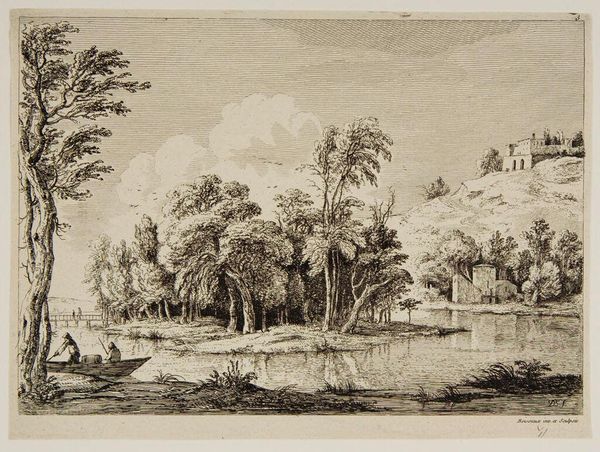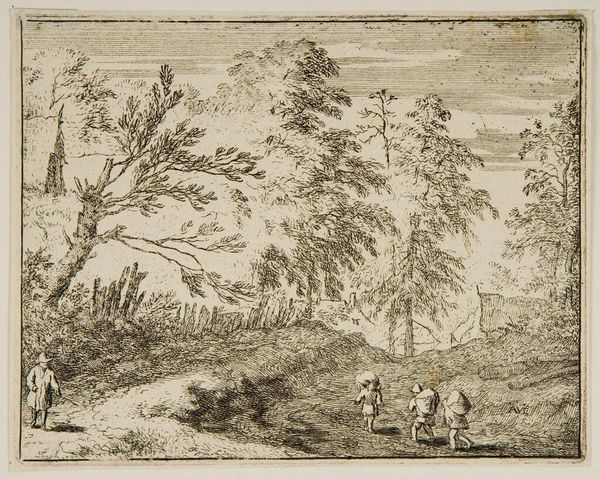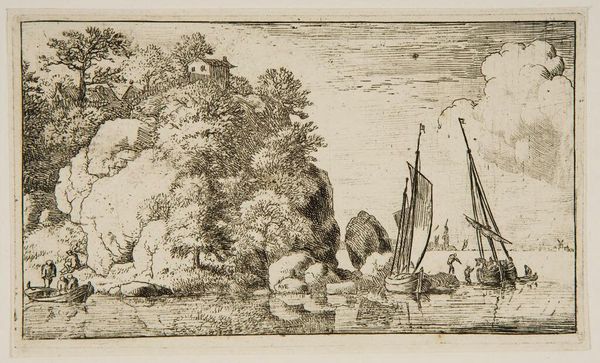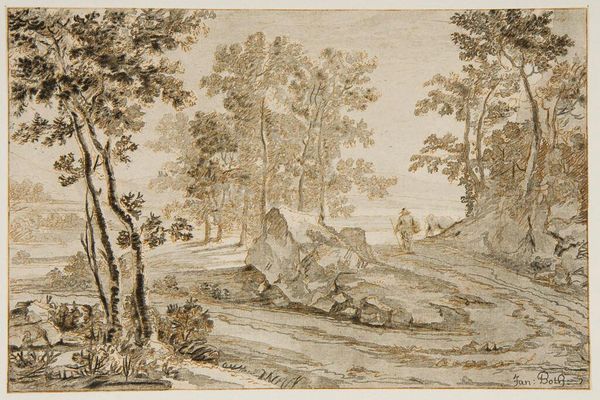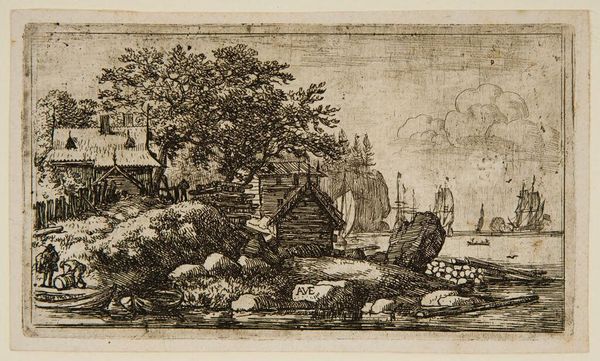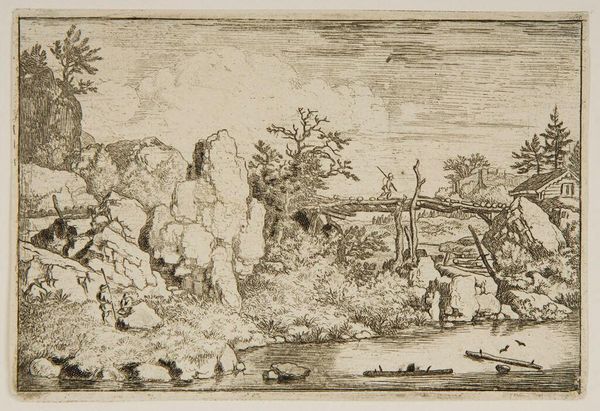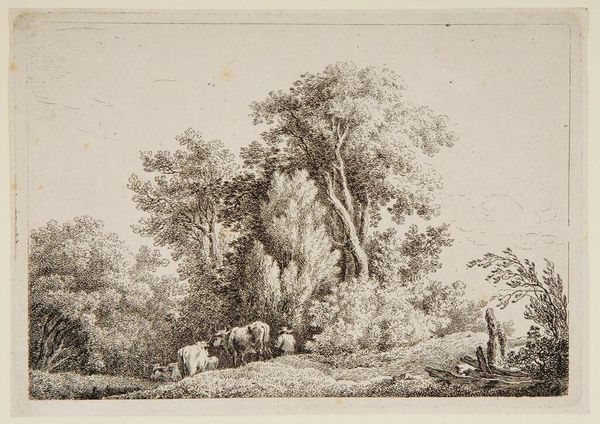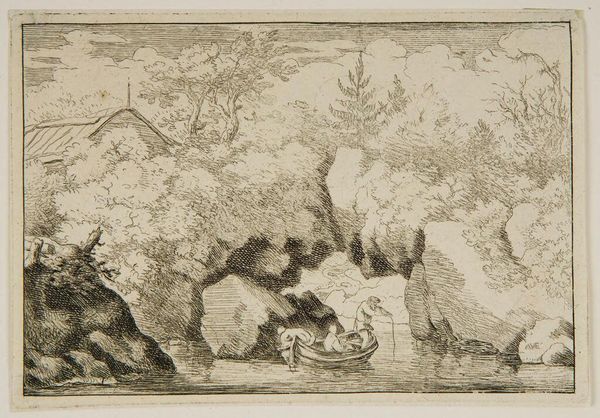
Copyright: CC0 1.0
Curator: Let's discuss Allart van Everdingen's "Little Covered Bridge," a work residing here at the Harvard Art Museums. The etching presents a placid waterside scene. Editor: Immediately, I’m struck by the density and detail, the artist's hand apparent in the multitude of short, hatched lines that create a seemingly wild space. There's a quiet, melancholic mood. Curator: Van Everdingen's tonal range, achieved solely through line work, is impressive. Observe how he varies the density to suggest depth and shadow. The composition is structured by the contrast between the rough, organic forms of the trees and the geometrical shapes of the architecture. Editor: I wonder about the social context of portraying landscape in this way. Are these serene scenes a form of escapism for the elite, a way to distance themselves from the realities of urbanization and class struggle in 17th-century Netherlands? Curator: Perhaps. But I see, too, a masterful manipulation of light and shadow, the way the artist uses line to suggest form and texture. It’s a symphony of marks, creating a unified aesthetic experience. Editor: An experience undeniably shaped by the realities outside of the frame. Still, your analysis of the formal elements enhances my understanding of how this piece functions within the established visual language of its time.
Comments
No comments
Be the first to comment and join the conversation on the ultimate creative platform.




